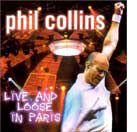以前的人居然会认为这些事很健康!
|
爱思英语编者按:有些以前的人觉得很健康风靡一时的事物或事情我们现在看来觉得很荒谬疯狂,以下的11件事就包括在内,其中含有喝放射性饮料,用水银治疗梅毒,吃绦虫减肥等等。你是不是觉得他们都疯了?不过话说回来,100年以后我们觉得很健康的东西我们的后人又可能觉得我们才疯了。所以,时代在进步,科学在发展,今天的天才,明天的傻子。 11 Crazy Things People Used To Think Were Healthy
Throughout history people have been looking for new ways to cure illnesses, live longer, look better, and be healthy. The search for health products continues today with the latest medications, and diet fads. But maybe we all need a little reminder that latest health fads haven't been thoroughly investigated, and may not be the cure all we hoped. The claims may be false and even dangerous. It's happened before. Here are 11 historical examples of miracle drugs and treatments that are actually unhealthy.
In the early 1900's people believed that radioactivity was good for you. Radioactive items were sold including radium pendants for rheumatism, uranium blankets for arthritis, anti-aging radioactive cosmetics, radioactive water, and more. Radioactive water became particularly popular when radiation was found in well-known hot springs that people thought had healing properties. Thinking radiation was natural in water, radioactive drinks were marketed to the public. Eben Byers, a well known industrialist, claimed to drink three bottles a day. His death inspired the 1932 Wall Street Journal headline "The Radium Water Worked Fine Until His Jaw Came Off".
Shark cartilage is marketed as supplement that can supporters say can be effective in the treatment of cancer. John Prudden, a surgeon in the 1950's began investigating the use of animal cartilage as a medical treatment. He reported that he was able to shrink tumors and treat cancers using animal cartilage. These results have not been repeated in other studies. but after the book "Sharks Don't Get Cancer" was published in 1992 shark cartilage became popular in alternative medicine. The idea was that if sharks do not get cancer and their skeletons are almost entirely made of cartilage then there may be something in the cartilage that protects against cancer. Scientific evidence does not support any health benefits of taking shark cartilage. The idea of sharks not getting cancer is also wrong as there have been at least 42 cases on record of sharks with tumors.
Heroin cough syrup was developed by Bayer Laboratories in 1898. Bayer discontinued making heroin by 1910 when the addictive properties of the drug were determined to be higher that originally thought. The US outlawed the production of heroin several years later in 1924.
Bloodletting was a medical procedure to help alleviate people of a number of ailments including pneumonia, fevers, back pain, rheumatism, headaches, melancholia, and more. This procedure originated from ancient Egyptians, and spread through Rome and Greece. The treatment persisted through the beginning of the 19th century. It was started with the idea that evil spirits caused disease and could be drawn out through the blood. Later, bloodletting was seemed necessary to maintain the balance of fluids in your blood, which they thought caused illness when your blood fluids were out of balance.
In the 1500's mercury was used in the treatment of syphilis. John Hunter was a doctor who claimed to have cured himself of syphilis using mercury. Syphilis actually occurs in three phases, with remission periods in between that can last between two or three years. These remission phases are probably what lead Hunter to believe he was cured. He later died of a heart attack during an argument.
In the 15th century the use of tobacco was first observed in the indigenous people of the New World. It was used for smoking pleasure as well as everything from disinfecting, relieving headaches, colds, warding off disease and fatigue, and even as an anesthetic. When the plant was brought back to Europe it was used to treat a wide range of conditions and was thought of as a panacea. The herb became know as the "holy herb" and "God's remedy". Tobacco enemas were used between the 17th to the early 19th century. This enema was said to work because of the stimulant properties of tobacco. In India there was a widespread belief that tobacco was good for teeth, resulting in tobacco toothpaste. It was pretty recently that the Indian Supreme Court upheld a 1992 ban imposed by the Union government to ban tobacco in toothpaste.
The lobotomy was first performed on humans in the 1890's. The procedure was thought to be a cure for mental illness. During it's popularity between the 1940's and 50's it was performed on about 40,000 people in the US. Neurologist Walter Freeman developed a quick method called a transorbital lobotomy or "ice-pick" lobotomy. A patient would be made unconscious by electroshock, then an instrument which resembled an ice-pick was inserted above the eyeball and through the orbit. When the brain was reached the pick would be moved back and forth to destroy neural pathways. This process was repeated on the other side.
During the 1950's and early 60's studies in LSD stated its use could cure alcoholism, criminal behavior and schizophrenia. While most people may no longer see LSD as something healthy, Norwegian researchers want to continue the LSD studies to treat alcoholism, and scientists believe it can improve treatments for schizophrenia.
Ads like this one suggest that sometime in the 50s, people started infecting themselves with tapeworms in order to loose weight. The idea was that tapeworms are a parasite and feed off the foods that you eat. This means your calories would be split between you and the tapeworm. The problem is that having tapeworms can result in abdominal pain, weakness, headaches, nausea, diarrhea, constipation, bloating, and vitamin deficiencies. Also sometimes tapeworms do not remain in your stomach. They move through parts of your body, including the brain, which can have deadly results. There's no certain proof that this is real, but there's no proof it's not!
Notorious for being included in the soft drink Coka Cola, cocaine was included in all sorts of different medicines and drugs. It's euphoric, energizing and pain relieving effects made it a perfect addiction to your healthy lifestyle when you were lacking a little pep. From CNN: Long before drug cartels, crack wars and TV shows about addiction, cocaine was promoted as a wonder drug, sold as a cure-all and praised by some of the greatest minds in medical history, including Sigmund Freud and the pioneering surgeon William Halsted. Freud even wrote to his wife about the miracle drug: "I take very small doses of it regularly against depression and against indigestion and with the most brilliant of success." Other diseases it could treat included tuberculosis and asthma. Today, we know of it as an incredibly addictive party drug that messes with your brain chemicals and your heart.
This one isn't old, but does defy a little bit of common sense. The Center for Science in the Public Interest filed a lawsuit against Coca Cola in 2009 for claims of Vitamin Water being marketed as healthy. The Center says that the 33 grams of sugar in each bottle can do more harm by promoting obesity, diabetes, and other health problems, than the vitamins do to promote any health benefits. Coke states that Vitamin Water is clearly and properly labeled so that consumers will not be led to thinking of this product as a healthy beverage. An article on LiveStrong states that Darrius Bikoff, founder of Vitamin Water, says that the drink is meant to be a supplement to the vitamins you already consume, not a substitute.
|









